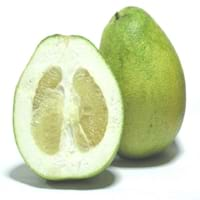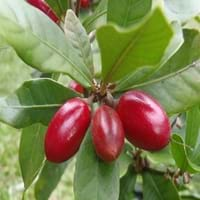Health Benefits
Cancer prevention, Heart care, Prevents Urinary Tract Infection
Good for diabetics, Improves well-being, Miraculin/miracle fruit makes sour things taste sweet
General Benefits
Digestive aid, Fights against infections, Flu treatment, Healing of wounds, Helps in weight loss, Treatment of common cold
Has taste modifying effect
Skin Benefits
Anti-aging benefits, Brightens and lightens complexion
NA
Hair Benefits
Promotes longer and healthier hair, Protects hair
NA
Allergy Symptoms
Abdominal cramps, Abdominal pains, Diarrhea, Lightheadedness, Nasal congestion, Nausea, Swallowing difficulties, Swelling of mouth, tongue or lips, Vomiting
Itching, Skin rash
Side Effects
Allergic reaction, Dizziness, Stomach pain
Changes taste of food eaten after this fruit, Coagulation
Best Time to Eat
As a snack in the late afternoon, Don't consume at night and before bed, Eat the fresh ones, avoid mixing with any other foods, don't eat after meal., Morning time (before lunch)
As a snack in the late afternoon, Eat the fresh ones, avoid mixing with any other foods, don't eat after meal., Morning time (before lunch)
Protein to Carb Ratio
Not Available
Vitamin B1 (Thiamin)
Not Available
Vitamin B2 (Riboflavin)
Not Available
Vitamin B3 (Niacin)
Not Available
Vitamin B6 (Pyridoxin)
Not Available
Vitamin C (Ascorbic Acid)
Vitamin E (Tocopherole)
Not Available
Water Content
Not Available
Calories in Fresh Fruit with Peel
Not Available
Calories in Fresh Fruit without Peel
Not Available
Not Available
Calories in Frozen Form
Not Available
Not Available
Calories in Dried Form
Not Available
Calories in Canned Form
Not Available
Not Available
Calories in Juice
Not Available
Calories in Pie
Not Available
Type
Citrus, Tropical
Berry
Season
All seasons
Monsoon
Varieties
Chandler, Cocktail, Cuban Shaddock, Hirado Buntan, Honey, Jaffa Red, Mato Buntan, Pomelit, Reinking, Siamese Sweet and Sweetie
Gymnema Sylvestre and Thaumatococcus Daniellii
Color
Green, Pink, Red, Yellow
Dark red
Inside Color
Creamy Yellow
Greyish-white
Taste
Juicy, Sweet
NA, Sweet
Origin
Malaysia, South-Eastern Asia, Thailand
West Africa
Soil Type
Clay, Loam, Sandy
Well-drained
Climatic Conditions
Warm
Rainfall
Facts about
- Flowers of pomelo fruit are used to make perfumes.
- Pomelo tree wood is used for the manufacture of tool handles.
- Life of pomelo tree is around 10 years.
- Height of pomelo can be 15-20 feet.
- The name 'Miracle' because of the magical experience you get after eating it.
- When you have lemon after eating this fruit, it tastes sweet as if it is added with sugar.
- It is also used as natural sweetener.
Other Countries
Argentina, India, Israel, Mexico, South Africa, Sudan, Thailand, Turkey, United States of America
NA
Top Importer
Europe
Not Available
Top Exporter
United States of America
United States of America
Botanical Name
Citrus maxima
Synsepalum Dulcificum
Synonym
Citrus grandis
Miracle Berry, Miraculous Berry and Sweet Berry
Subkingdom
Tracheobionta
Tracheobionta
Division
Magnoliophyta
NA
Subclass
Rosidae
Asteridae
Order
Sapindales
Ericales
Family
Rutaceae
Sapotaceae
Species
C. maxima
S. dulcificum
Generic Group
Citrus fruit
Not Available
Difference Between Pomelo and Miracle fruit
We might think that Pomelo and Miracle fruit are similar with respect to nutritional value and health benefits. But the nutrient content of both fruits is different. Pomelo and Miracle fruit Facts such as their taste, shape, color, and size are also distinct. The difference between Pomelo and Miracle fruit is explained here.
The amount of calories in 100 gm of fresh Pomelo and Miracle fruit with peel is 38.00 kcal and Not Available and the amount of calories without peel is Not Available and Not Available respectively. Thus, Pomelo and Miracle fruit belong to and category.These fruits might or might not differ with respect to their scientific classification. The order of Pomelo and Miracle fruit is Sapindales and Ericales respectively. Pomelo belongs to Rutaceae family and Miracle fruit belongs to Sapotaceae family. Pomelo belongs to Citrus genus of C. maxima species and Miracle fruit belongs to Synsepalum genus of S. dulcificum species. Beings plants, both fruits belong to Plantae Kingdom.









